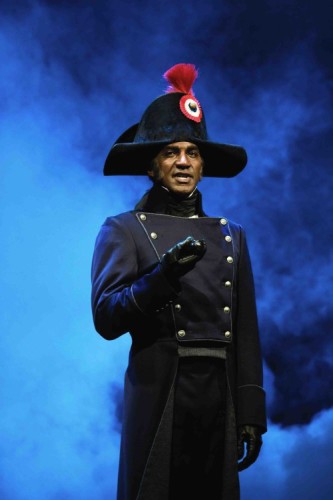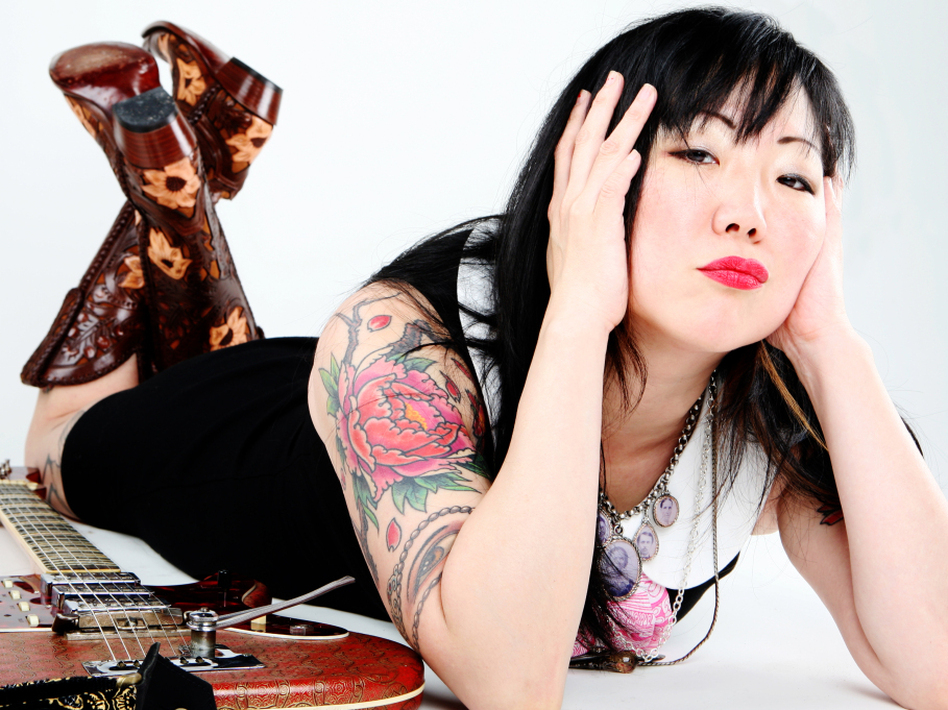Written by Jackson Adler.
According to Wikipedia (please, just go with me), “Colorblind casting” is “the practice of casting a role without considering the actor’s ethnicity.” This definition (and the first that many people will read when they first Google it) is problematic, as that is rarely how “colorblind casting” is carried out. In theatre, “colorblind casting” is most often used for European period pieces, in which at least one Person of Color is cast as a role that the White public has usually thought of as White, regardless of whether people of that actor’s ethnicity were prevalent in the character’s location and social standing. While often used in the theatre, “colorblind casting” is rarely used in TV and film, supposedly because TV and film claim to be more concerned with historical accuracy, despite the fact that People of Color of various groups have had long histories in Europe. Thus, theatre erases the histories of People of Color in Europe by claiming that they use “colorblind casting” instead of just “casting” when they cast a Person of Color in a role that, historically, could have been a person of color. Meanwhile, TV and film European period pieces erase that history by Whitewashing it, not casting and thereby not providing employment to, or visibility and representation of, actors who are People of Color at all.

An excellent example of both “colorbind casting” and Whitewashing is the musical Les Miserables, which takes place in early 19th century France. In the film, most all of the cast, from the leading characters to the background characters, were White. In its various London, Broadway, and other stage incarnations, “colorblind casting” has been used. The film was historically inaccurate in its Whiteness, because, particularly in Paris where trade was incredibly prevalent, there were many People of Color of various groups, with Black and Chinese people being particularly large minorities. For the stage productions to claim that they use “colorblind casting,” especially when casting Black and Chinese actors, is ignorant and racist because it is erasure of the history of People of Color in France. Did the dramaturges not even do the bare minimum historical research? Did the newest revivals not even use Google or Wikipedia to look up French history? These creative teams of the stage production are, unknowingly, not employing “colorblind casting”; they are employing “casting.” Meanwhile, the creative team behind the film was just racist, as well as unknowingly historically inaccurate.

A more recent example is in the casting of Vanessa Hudgens as the titular Gigi on Broadway. Vannessa Hudgens is Filipina, as well as Chinese, Spanish, Irish, and Native American. While rare for a girl of Gigi’s social standing in Paris in the year 1900, it would not be impossible for Gigi to have had the same exact ethnic heritage as Vanessa Hudgens, and very possible for Gigi to have had an ethnic heritage similar to Hudgens’. Also, in the original novella, Gigi’s maternal side of the family is Spanish, with her grandmother in particular being described as “dark.” The rest of Gigi’s ethnic background is not described in the novel. Not only is it historically accurate to cast Hudgens as Gigi, but it is supported by the original text off of which the musical is based.

It should also be noted that even creative teams who claim to be “colorblind” are not. An actor’s appearance, possibly even more than their performance skill level, is always taken into account. It is always “seen.” Few creative teams would cast Cosette and Eponine as 6’1’’ and Marius as 5’4’’, for example, due to stigma against tall women and short men. In fact, when theatrical creative teams use “colorblind” casting, usually Eponine is more likely to be a Woman of Color (take note that she DIES, and in the service of Marius, no less), than is Cosette (the girl Marius marries). It is also rarer to have a Person of Color play the protagonist Valjean than the villain/morally ambiguous Javert. But it’s totally not racist, everyone. The creative team doesn’t see color! …right? (Sigh.)

It is not only the poor and middle class in Europe who had ethnic diversity, but even European royalty, especially in Spain and Portugal. Queen Charlotte, wife to King George III of England, was visibly biracial/mixed race. Needless to say, Amma Asante’s Belle, starring Gugu Mbatha-Raw, should not be the only film, or one among a few films, to present these stories of upper class People of Color in Europe.
“Colorblind casting” is not entirely the fault of the creative teams behind these projects, however, as it is also largely the fault of White historians Whitewashing and revising history, especially in school textbooks. However, dramaturges and creative teams should be expected to do their research well. The creative team behind the TV miniseries The Bible (not a European story in origin, but a story important to many ethnic Europeans, so please go with me) felt they had to justify its casting of (only a very few) Black actors as Biblical figures in a special that gave its viewers a (very) short history lesson. The creative team did their homework, and applied (some of) it, even knowing that they would still get criticized by White viewers for not having an all White cast (though many, if not most, of the actors they cast were still White, with Joseph even having a Cockney/Estuary dialect). However, in reality there would have been even more People of Color, and it wouldn’t have been historically inaccurate to even have cast no White actors. No one should feel they have to justify depicting Mary Magdalene as Black. Meanwhile, how many Arab or Black actors have played Jesus? While how many White actors with light hair and blue eyes have played Jesus? Hollywood has also Whitewashed the stories and characters of Noah, Moses, and Cleopatra, and shows little sign of stopping this long-time trend.
Even in European folklore, there are People of Color. An example of this is the Black or Arab Arthurian knight Sir Palamedes, who was a rival to Tristan for Isolde’s hand in marriage. However, most film adaptations of Arthurian legends leave out that character, and have an all White cast. Many of the fairy tales in “Into The Woods” have origins outside of Europe, such as Cinderella, elements of the story having origins in Chinese history and Ancient Egyptian history and folklore. The setting of Disney’s Into the Woods was purposefully made to be vague, but even if it were set in a specific time period and place, it would not be historically inaccurate for even The Princes to be played by People of Color. However, while the background characters of the film Into The Woods were ethnically diverse, the main and supporting characters were all White.

The Bible is far from the only example of non-European stories being Whitewashed both in film and onstage. The story of Aladdin has a problematic background, with it being “discovered” in France, but probably taking place in China, and definitely having Arab characters. The creative team behind Disney’s stage musical of Aladdin, originally cast no Arab performers at all, despite the Disney film clearly setting it in the Middle East (albeit with many ethnic stereotypes and depicting Aladdin and Jasmine as light-skinned and more European-looking than other characters). Similar to the situation with Les Miserables, it is not “colorblind” casting to cast someone light skinned and White-passing (in this case, biracial Filipino and Ashkenazi Jewish) as Aladdin, while casting someone who is Black as the comedic and literally tap-dancing Genie. These actors were specifically chosen for these specific roles, and there is nothing “colorblind” about it, nothing about their appearances that was ignored. Meanwhile, even contemporary works such as Avatar: The Last Airbender and Ghost in the Shell are and have been Whitewashed by Hollywood.
People of Color, historical and contemporary, in Europe and outside of it, are still being silenced, as well as colonized and erased, by Europeans, even onstage and on film. There is no excuse that can back it up. Even though historians Whitewash history, there is still a lot of material available to dramaturges and creative teams, whose jobs require them to do that research. Whether racism is intended or not, whether it is through ignorance or not, it is still racism, and still erasure. It is still wrong.






